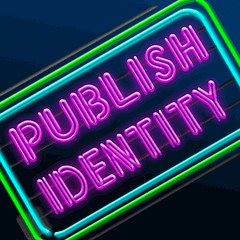Social Media For Readers and Writers: Cursor Takes the Publishing Industry To The Next Level
September 29th, 2011 by
Is the traditional trade paperback and remainder-bin production model of books doomed? With new devices for the digitization of books appearing every day, from the freshly-announced Kindle Fire to slick iPad e-reader apps, the conclusion that the publishing industry will soon go the way of the dodo is easy to come to. After all, literacy rates are plummeting, book sales are down and one of the original giants of big-box retail bookstores has recently crashed and burned in a spectacular fashion. Despite the failing numbers of traditional methods of publication, there are more novels and poems and stories and essays being written and consumed now than ever before. In the face of the instant-gratification model the Internet provides, where does the written word go from here? Richard Nash, former editor of Soft Skull Press, has an idea. 

The traditional delivery of a book from author’s pen to reader’s hand is long, complex and prone to errors in translation. The author-agent-publisher-printer-wholesaler-retailer-reader chain has failed in a significant way because it by its very nature promotes isolation between the reader and the writer. With that in mind, Nash and his business partner Mark Warholak have launched a new project called Cursor, designed to apply the concepts of social media and successful crowdsourcing to the creative writing world. In his Publisher’s Weekly article, Nash elucidates many of his problems with the industry as it stands today and how the diversification of Cursor’s services are key to promoting success both financial and artistic. Its first imprint Red Lemonade is just one of the many “self-organizing, self-selected, self-perpetuating communities [created] around a reading-writing platform” that are to come. Red Lemonade is “pop-lit-alt-cult” operation with charmQuark, a science fiction-fantasy genre community, soon to follow.
Each of these subgroups will publish approximately one or two books a month using the Cursor software platform in both digital and trade paperback format, staggering the release dates in order to maximize profits. Importantly, though, Cursor’s source of revenue isn’t just from pure sales of its product. There are paid membership options available to widen the availability of tools and services, for example peer-to-peer writing groups, recommendation engines, access to established authors from within the Cursor system and beyond, and professional editing and marketing assistance. Other sources of income are available via advertising (this is social media, after all), connecting writers with providers of publishing services, agent fees and more. All of this will be balanced with the social component that allows writers and readers to interact and comment on each others’ works and postings. With the ability of the Internet to disseminate quality material and enable discussion thereof from commentators all over the world, this network hopes to create a thriving series of sensitive feedback loops that allow the showrunners to quickly identify and implement the features writers want, not to mention publishing the works that have gained the most reader support. “Book publishing doesn’t work with top down advertising,” says Nash. “It’s always done its best when one person says to another person: ‘You should read this book.'” The sharing and viral campaign potential for this kind of system seems self-evident, as the community, not the marketing department, is responsible for deciding what is ultimately rewarded with publication.


In 2008, more than 275,000 new titles were published through a variety of sources. Data suggests that more recent numbers will be even higher. The music industry has gone almost completely digital, and sociality is being emphasized even further with Facebook’s recent seamless inclusion of Spotify plays into home page feeds. With the ubiquity of high-speed Internet becoming more and more a fact of daily life and the communication and sharing potential of the social web continuing to evolve, books still have a long way to go to catch up with their other media counterparts — but Cursor promises big things in the way of making up for lost time. As Nash himself says, “technology has emphasized a simple truth at the heart of my new enterprise: we are what we read, we are what we write, and we organize ourselves around and connect with one another through what we read and write.” Red Lemonade already has a number of titles in its store in both paperback and ebook format, and the word of mouth around them has been ebullient. Broadening the way readers and writers interface, Cursor isn’t designed to “save publishing” — it’s designed to bring it into its new form.

